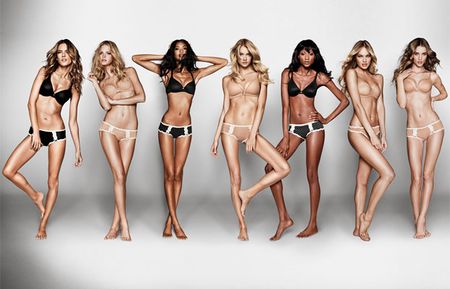GRSJ224/Feminism Role of Social Media
Introduction
With the feminism movement and social media on the rise, feminists are using it as a way to broadcast their opinions, lives, and pictures that are "representational of their lives." Through the exposure of social media, global issues regarding feminism are made aware through the use of hashtags and rapid sharing on social media platforms. However, social media also causes other negative impacts onto some females, imposing dissatisfaction in their self-esteem which can cause issues such as low self-esteem, increased anxiety and depressive moods.
The Role of Social Media
Throughout the years, Internet usage and social media has been on the rise in the last decade. However, studies have revealed that the increased social media platforms and usage can have negative consequences on self-esteem. Results show that increase use of social media within females in the pre-teenage, teenager, and university students range have found lower rates of self-esteem and higher rates of self-comparison to their peers and social media role models on Facebook (Fardouly et al., 2015). In addition, there has also been a decline in satisfaction with women's bodies due to the rise in campaigns in lingerie, particularly Victoria Secret models and the Victoria Secret "Love My Body" campaign. This can lead to decreased self-esteem and self-satisfaction, as well as negative self-perception and even increased risk to anxiety and depressive moods.
Upon seeing slender female bodies, women report higher self-consciousness and negative self-esteem due to exposure to those photos (Wilcox & Laird, 2000). In addition, just browsing social media has been linked to lower self-esteem as opposed to general browsing on the Internet (for example, looking at movie viewings, research, news articles) (Fardouly et al., 2015). Not only does self-comparison to others affect women's self-esteem on their body image, it also affects their face, hair, and skin image (Fardouly et al., 2015) and this has seen to affect young girls as young as early middle school or late primary school.
Case Study: Alana Blanchard
Social media also plays a big role in reinforcing gender norms; specifically seen through the representation of sports reinforcing female gender norms. Feminine features are often showcased and indirectly encouraged. Because of the lack of representation in the media for female sports, female athletes are routinely sexualized and trivialized, often upholding masculine privilege in sport and superiority of male sports in general, thus position women athletes as inferior to male standards (Thorpe, 2017). Because of this, female athletes often have to conform to gender norms in order to get some attention from the media regarding their sport. An example of this would be Alana Blanchard: a female surfer in the United States. She embodies the stereotypical female norms in Western countries: blonde hair, feminine characteristics, and living the perfect "Californian" western lifestyle and emphasizes these characteristics on her instagram page (one of which that has 1.9 million followers as of November 2017) and thus being how she gets attention for her sport (Thorpe, 2017). These representations are similarly to mainstream media, but also to White privilege, youth, and emphasized femininity. Because of this, she often faces objectification from males and envious reactions from young girls that follow her, which can cause a decrease in self-esteem to the young girls that follow her.
Social Media and the Feminist Movement
Positive effects of social media
Increased use of social media has made it easier for the feminist movement to raise awareness of social issues through the use of hashtags through social media platforms such as facebook, twitter, instagram, and more. Through removing the barriers of distance and opening up different platforms for activism, it has made it easier to create dialogue and raise awareness about certain sexism issues in the world (Chittal, 2015). These trends in the use of hashtags have made social issues revolving sexism, feminism, and justice issues impossible to ignore through social media platforms, with most hashtag campaigns and mere exposure of the issues cause ripples to create change. For example, the most recent social media activist ripple effect is Cyntoia Brown, a 16 year old female that was sentenced to life in prison after killing the man that was using her as a sex slave. The use of the hashtag #FreeCyntoiaBrown caught the eyes of many celebrities (one of which being Kim Kardashian) and has caused widespread media attention after Kim Kardashian tweeted: "The system has failed. It’s heart breaking to see a young girl sex trafficked then when she has the courage to fight back is jailed for life! We have to do better & do what’s right. I’ve called my attorneys yesterday to see what can be done to fix this. #FreeCyntoiaBrown" (Forde, 2017). Due to the high social media usage and the use of hashtags, justice issues are now being easier to spot due to the high spread of information and user usage.
Negative effects of social media
Although majority of the social media movements for justice issues have been successful, there have been few instances where the attention caused the opposite effect. An example of this would be the #BringBackOurGirls hashtag that was created after Boko Haram kidnapped over 200 young girls at a boarding school in Nigeria to sell them off as sex slaves. The attention caught the eyes of Michelle Obama and Malala Yousafazi but due to the heightened and mass attention of the hashtag, the attention fuelled Boko Haram as he "enjoyed the United States' attention" and thus, trying to "negotiate" with the Nigerian and American government to incentivize the freeing of the girls (Matfess, 2017). Although some girls managed to escape, some girls were also managed to be freed by Boko Haram after two months of negotiation with International Red Cross and the Swiss government (Matfess, 2017), so although not all girls were freed, the mass media attention did generate some good as some girls were freed from captivity.
Despite having some hashtag campaigns falling short, it is important to note that most have been successful in evoking change. Although Boko Haram was fuelled from the mass attention given by the United States, it did evoke enough change to where 21 school girls were released from his captivity. However, there is still some concern revolving the use of social media for feminist-based movements Skeptics are starting to believe that taking these concerns to social media will lead to criticizing every misconduct a male makes, not matter how minuscule (Henderson, 2017). This can be worrisome as this waters down the impact and revolutionary power that feminism holds. In addition, social justice movements can be used as a source of commodity and revenue for ads, taking away the important and real messages the movements are trying to convey.
References
Chittal, N. (2015). How social media is changing the feminist movement. NBC News. Retrieved from: http://www.msnbc.com/msnbc/how-social-media-changing-the-feminist-movement
Forde, K. (2017). Cyntoia Brown's case back in the spotlight after Rihanna, Kim Kardashian West speak out. ABC News. Retrieved from: http://abcnews.go.com/US/cyntoia-browns-case-back-spotlight-rihanna-kim-kardashian/story?id=51344862
Fardouly, J., Diedrichs, P. C., Vartaniana, L. R., and Halliwell, E. (2015). Social comparisons on social media: The impact of Facebook on young women’s body image concerns and mood. "Science Direct, 13," 38-45.
Henderson, C. (2017). How social media changed the feminist movement." vt." Retrieved from: http://vt.co/lifestyle/social-media-changed-feminist-movement/
Matfess, H. (2017). Three Years Later, A Look at the #BringBackOurGirls Catch-22. Daily Beast. Retrieved from: https://www.thedailybeast.com/three-years-later-a-look-at-the-bringbackourgirls-catch-22
Thorpe, H., Toffoletti, K, and Bruce, T. (2017). Sportswomen and Social Media: Bringing Third-WaveFeminism, Postfeminism, and Neoliberal Feminism Into Conversation. "Journal of Sport and Social Issues, 41(5)," 359-383.
Wilcox, K., and Laird, J. D. (2000). The Impact of Media Images of Super-Slender Women on Women's Self-Esteem: Identification, Social Comparison, and Self-Perception. Journal of Research in Personality, 34, 278–286. doi:10.1006/jrpe.1999.2281

